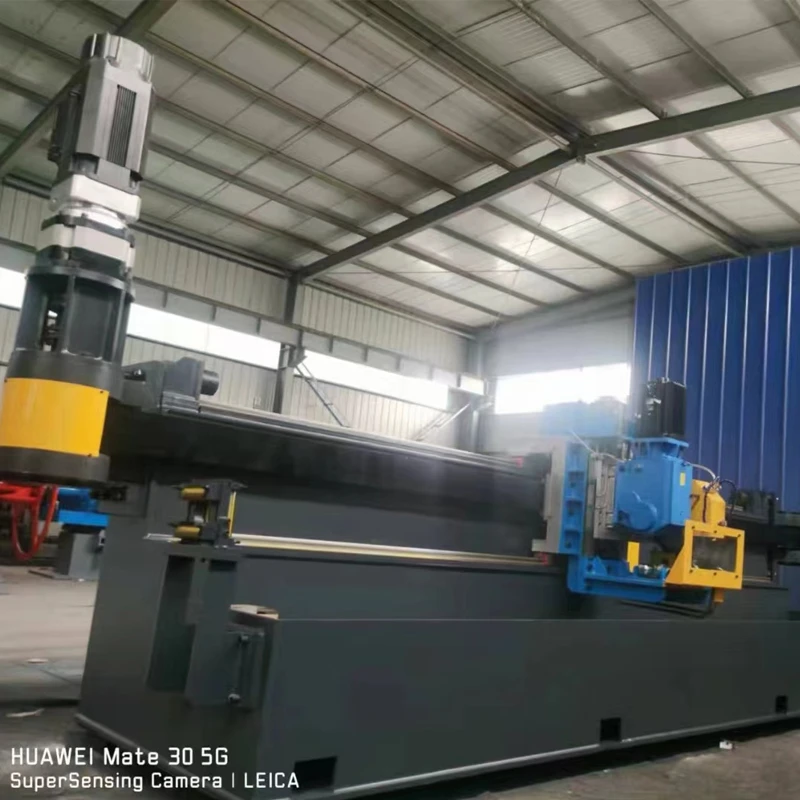Advancements and Techniques in Cold Roll Forming for Metal Fabrication Processes
Cold Roll Forming An Efficient Process for Creating Durable Steel Products
Cold roll forming, also known simply as roll forming, is a manufacturing process widely utilized in the production of metal products with specific shapes and dimensions. During this process, metal strips or sheets are passed through consecutive pairs of rollers in a continuous sequence, resulting in a finished product with uniform cross-sections and precise tolerances. This article explores the principles of cold roll forming, its advantages, applications, and considerations.
Principles of Cold Roll Forming
Cold roll forming operates at room temperature, which distinguishes it from hot forming processes that require elevated temperatures to deform metals. The metal is usually supplied in the form of flat coils, which is then fed into the roll forming machine. Each pair of rollers applies pressure to shape the metal progressively as it moves forward. The rotational action of the rollers guides the metal into the desired profile, which can be rectangular, circular, or any custom shape required by the specifications.
The process typically begins with initial setup, involving designing the required die profiles and adjusting the machine settings for the specific material. Once configured, the roll forming machine can run continuously, making it an efficient choice for high-volume production.
Advantages of Cold Roll Forming
1. High Precision and Tolerance One of the most significant benefits of cold roll forming is the high level of accuracy it offers. The process can achieve tight tolerances, ensuring that the dimensions of the final product meet exact specifications.
2. Consistency and Repetition As roll forming is a continuous process, it produces consistent results batch after batch. This repeatability is crucial for manufacturers who rely on uniform products for assembly and construction.
3. Enhanced Material Strength The cold working nature of the process enhances the strength of the material, as the metal is work-hardened during forming. This increase in yield strength is beneficial in applications where durability is critical.
4. Reduced Waste Cold roll forming is known for its material efficiency. The process creates minimal scrap compared to other manufacturing methods, which is economically and environmentally advantageous.
5. Versatility in Design Manufacturers can create complex profiles and shapes that may be challenging or cost-prohibitive to achieve through alternative methods. This versatility allows for innovation in product design.
cold roll forming

Applications of Cold Roll Forming
Cold roll forming finds applications across various industries due to its adaptability and effectiveness in producing structural components
. Some notable applications include- Construction It is widely used for manufacturing channels, angles, and braces, which are essential for building frames and supports. These components can be used in both residential and commercial construction.
- Automotive Industry Cold roll forming is used to produce parts such as chassis frames, reinforcements, and brackets designed to endure rigorous conditions while maintaining low weight.
- Aerospace The aerospace sector benefits from the precision and strength of roll-formed parts, used for structural components that require high reliability and lightweight profiles.
- HVAC and Electrical Ductwork, conduits, and other fittings are also manufactured using cold roll forming techniques, showcasing the process's versatility.
Considerations for Cold Roll Forming
While cold roll forming has numerous advantages, certain considerations must be made before implementing this process. The initial setup costs can be high, particularly for custom profiles. Additionally, material selection is crucial; not all metals are suitable for cold forming, and specific grades and thicknesses will work better than others.
Another consideration is the need for specialized equipment and tooling. Designing and fabricating the rollers for unique shapes can require time and resources, hence proper planning and design considerations are vital.
Conclusion
Cold roll forming is a formidable manufacturing technique that provides high precision, consistency, and strength in produced metal components. Its applications span various industries, making it an invaluable process for modern manufacturing. As technology continues to advance, we can expect cold roll forming to evolve, further enhancing its efficiency and broadening its scope in metal fabrication. Whether it’s within the realms of construction, automotive, aerospace, or HVAC, the advantages of cold roll forming make it a go-to choice for engineers and manufacturers engaged in the production of durable and efficient metal parts.
-
High Frequency Straight Seam Welded Pipe Production Line-BzZhou Xinghua Machinery Equipment Manufacturing Co., LTD.|Precision Welding, High EfficiencyNewsJul.30,2025
-
High Frequency Straight Seam Welded Pipe Production Line|BzZhou Xinghua|Precision Welding&EfficiencyNewsJul.30,2025
-
High Frequency Straight Seam Welded Pipe Production Line - BzZhou Xinghua|Precision Engineering&EfficiencyNewsJul.30,2025
-
High-Frequency Straight Seam Welded Pipe Production Line-BzZhou Xinghua Machinery Equipment Manufacturing Co., LTD.NewsJul.30,2025
-
High-Frequency Straight Seam Welded Pipe Production Line-BzZhou Xinghua Machinery Equipment Manufacturing Co., LTD.|Precision Manufacturing, High EfficiencyNewsJul.30,2025
-
High Frequency Straight Seam Welded Pipe Production Line-BzZhou Xinghua Machinery Equipment Manufacturing Co., LTD.|Precision Steel Pipe Manufacturing&Industrial EfficiencyNewsJul.29,2025


